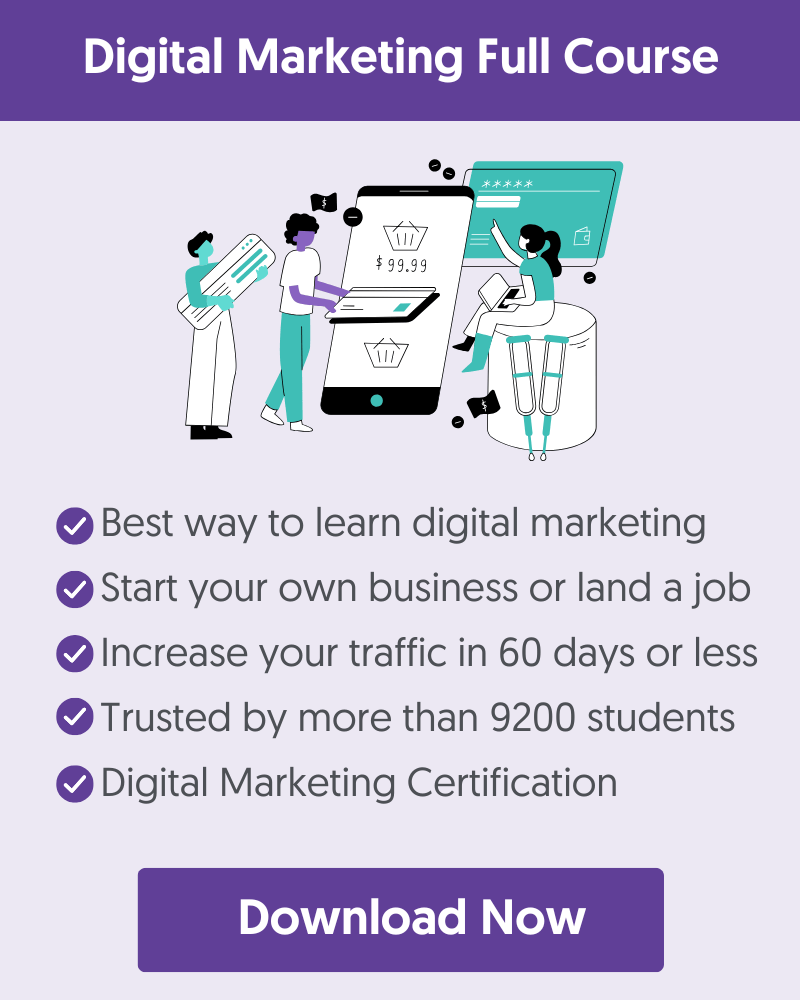Running a digital marketing campaign can seem complex, but planning your campaign step-by-step can increase your chances of success.
In this post, you'll learn how to create a digital marketing campaign to generate the best possible results.
What Is a Digital Marketing Campaign?
A digital marketing campaign is a strategic effort to promote a company’s products or services to a specific online audience using a multi-channel approach across various digital platforms.
The primary goal of a campaign can range from increasing brand awareness, driving more traffic, and generating sales to enhancing customer engagement and building long-term brand loyalty.
The purpose of planning a digital campaign is to help you identify who your audience is, what goals you want to achieve, and which tactics (SEO, PPC, social media marketing, content marketing, etc.) to use to achieve your goals.
How To Run a Digital Marketing Campaign
These are the 10 steps to set up a digital marketing campaign.
- Set Your Marketing Goals
- Identify Your Target Audience
- Perform Keyword And Topic Research
- Run A Competitor Analysis
- Choose Your Digital Channels
- Set Campaign Budget
- Create Your Content Strategy
- Create A Project Plan With Milestones
- Start Your Campaign
- Monitor And Optimize Performance
1. Set Your Marketing Goals
The first thing you need to do is figure out why you’re running a digital marketing campaign in the first place.
The options are nearly endless, but if you try and pursue too many goals at once, you won’t achieve any of them. For example, do you want to improve your conversions, grow your email list, improve your traffic, rank for more keywords, or get more followers?
There are a handful of different types of goals: brand awareness, increase in sales, lead generation, and social follower growth. Some of these goal types are easier to quantify than others.
For example, it’s much easier to see if your email list has new subscribers than if more people know your brand. However, you’ll want to try to ground these goals with data as much as possible.
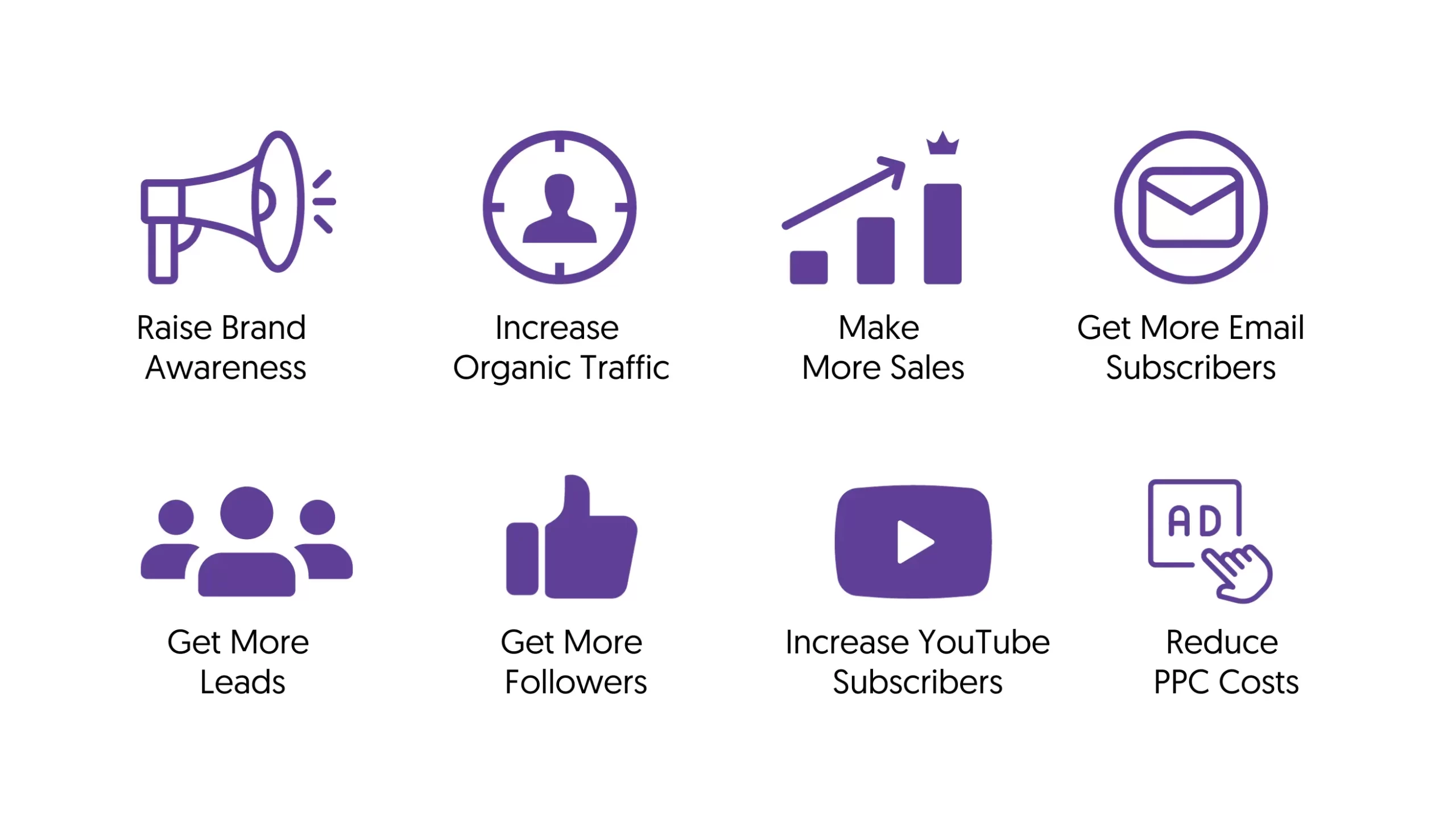
Here are some examples of attainable goals:
- Improve brand awareness by getting 5 mentions from major news outlets/websites
- Increase search engine traffic by 5,000 visitors per month in 45 days
- Double social media followers to 10k by the end of the year
- Improve sales by 50% by adding an abandoned cart sequence to our eCommerce store
- Add 500 new qualified email subscribers in 30 days
Each goal you set will have a plan of action. For instance, if your goal is to increase organic traffic, this will include evaluating your existing content, doing keyword research, updating older content, writing new posts, and even doing backlink outreach and promoting your content across social media.
You can run as many online marketing campaigns as you want. Overall, you’ll want to create a specific, measurable outcome for every campaign you run.
This allows you to dig into your data to see what’s working so you can refine your digital marketing strategy moving forward.
2. Identify Your Target Audience
Do you know your audience? Before you start a marketing campaign, you’ll need to define the exact audience you’re going to target.
If you don’t know this exact person yet, you’ll need to spend some time thinking about and researching who this person is.
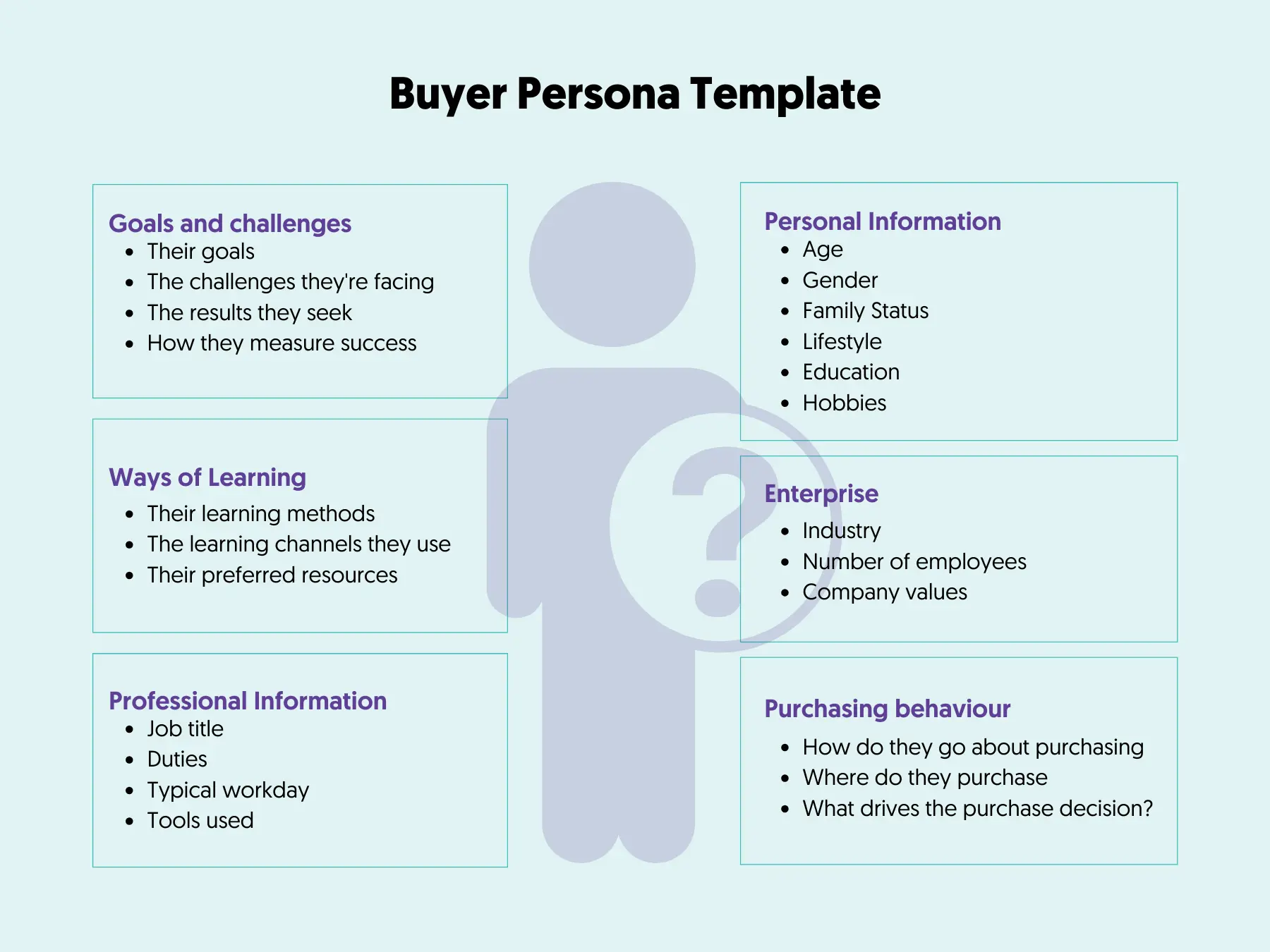
One of the best ways to do this is to create a buyer or customer persona. This is a description of your ideal customer and will include information like:
- What they do for a living
- How much money do they earn
- What their family situation is like
- Their age
- Any hobbies they have
When creating an ideal customer persona, you should also include the following:
- What other types of websites do they visit online
- The goals they have when visiting your site
- Any fears or desires they have
If you’ve never done this exercise before, you can actually pull information about your target market from existing data.
One of the best sources of this will be Google Analytics. If your website has been getting traffic, then you can pour through your data to pull out information like:
- Age
- Gender
- Where they’re from
- How they navigate your website
- The types of content they value the most
All of this should be combined into a document or user profile, and you can even include images so anyone working on the campaign can visualize this person.
If you have multiple audience segments, you’ll want to do this process multiple times and create customer avatars for each segment of your audience or market you’re targeting.
3. Perform Keyword And Topic Research
By now, you should have a clear idea of your campaign goals, and you’ll have a detailed view of the type of people you want to target. The next step is finding topics and keywords related to your audience.
Whether you’re creating an SEO, PPC, email, Facebook, or an entirely different campaign, keyword research can help move you in the right direction.
The goal of keyword research is to put yourself in your customer’s shoes and think about the keywords they’ll be typing into Google (or another platform) when searching for your products and services.
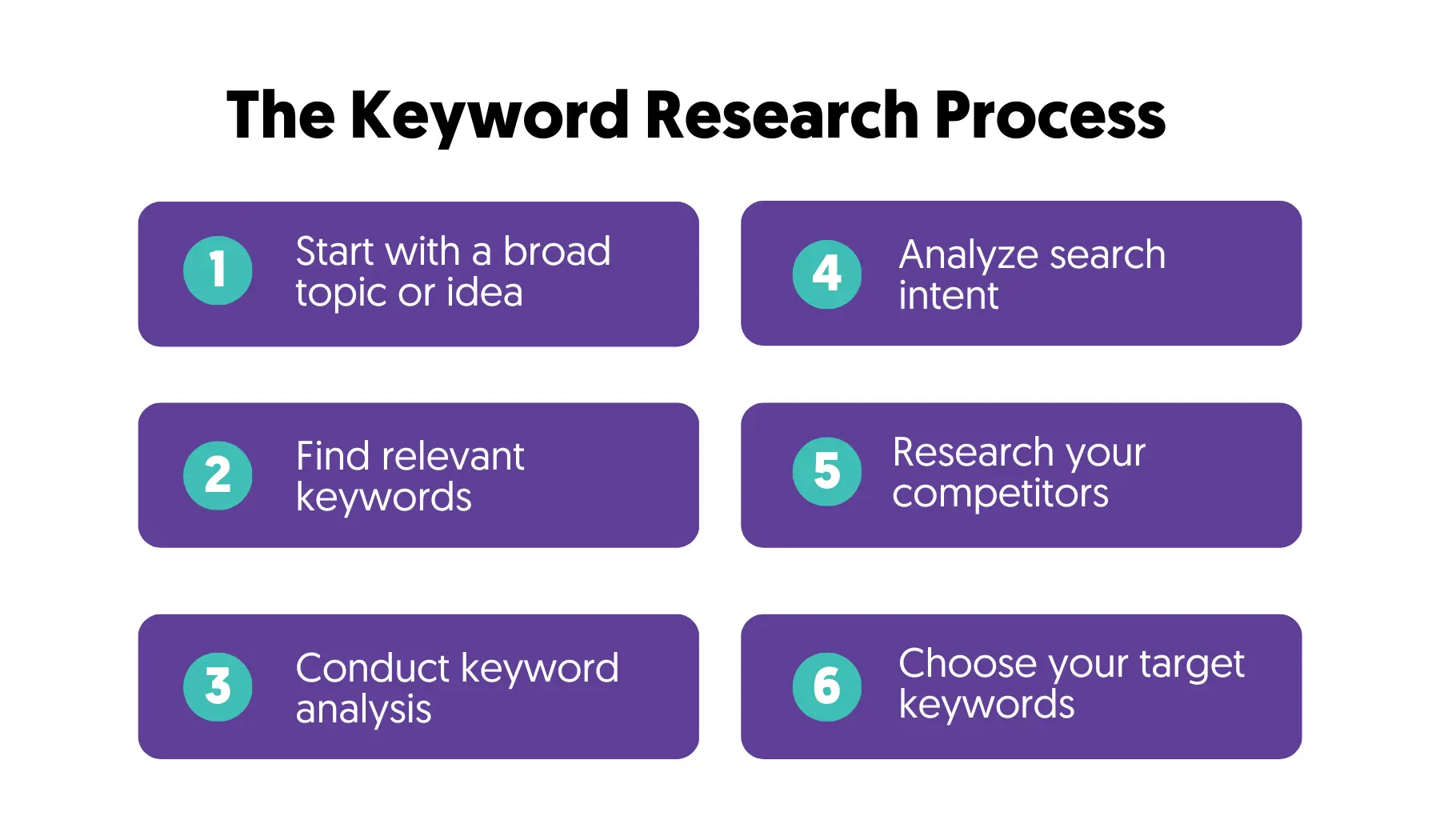
Spend time brainstorming keywords that fit this description and then run these keywords through keyword tools to find keywords and phrases with decent volume and not much competition.
Besides Google search, other ways to brainstorm keywords are:
- Search for your market on Reddit to find topics related to your niche.
- Use a tool like Answer the Public to find question-based keywords.
- Use Google Keyword Planner to find out the related keywords.
Once you have your initial list, you can use these seed keywords and run them through a tool like Semrush for detailed keyword analysis.
The end result should be a list of SEO and PPC keywords for your campaigns.
4. Run A Competitor Analysis
The next step is to analyze what your competitors are doing. This will allow you to understand their strategies and identify their strengths and weaknesses.
Here are a few questions to ask when researching your competitors:
- What kind of products do they promote?
- Which channels do they use?
- What's their content strategy?
- What type of ads do they run, and what's their messaging?
- What's their pricing strategy?
- What do customers say about their products and services?
There is a lot to learn from competitor analysis. Your goal will be to find out what's working for them, replicate their strategies, and find ways to differentiate your campaigns and make them better.
You can use tools like Facebook Ads Library and Google Ads Library to spy on their paid ad campaigns and other techniques to find competitors' keywords.
5. Choose Your Digital Channels
The next step is to decide which channels to use in your campaigns. Generally, you’ll combine different channels in a digital marketing campaign. However, when first starting, you’ll want to focus on only one or two channels that tie into your main goal.
There are several digital marketing channels to choose from, and the most popular are SEO, PPC, social media marketing, email marketing, affiliate marketing, and influencer marketing.
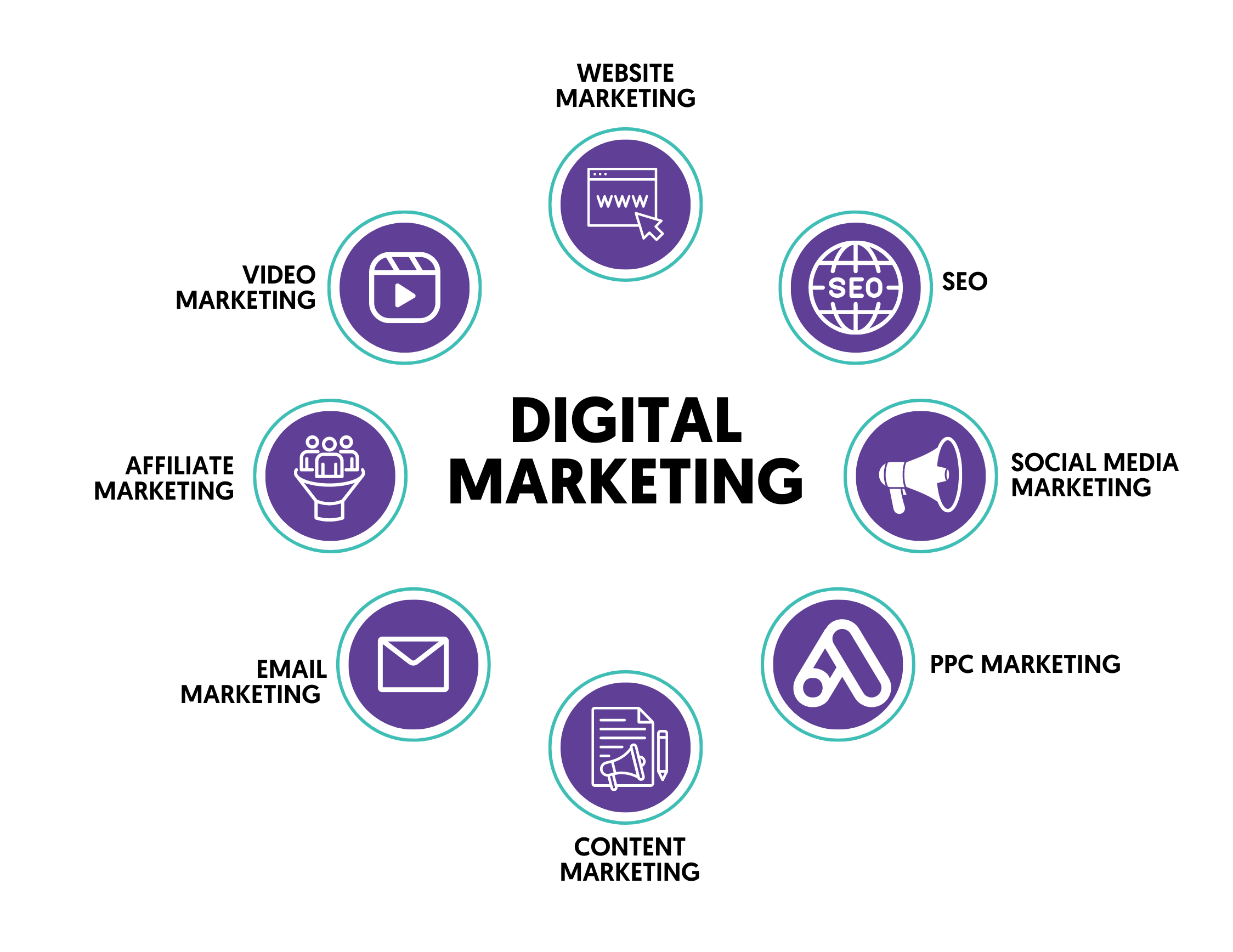
For example, if your main goal is to increase brand awareness, social media and influencer marketing can be powerful tools. Social media platforms allow you to reach a wide audience and engage with them directly, while influencers can amplify your message to their followers.
On the other hand, if your main goal is to drive more traffic to your website, focusing on SEO and PPC would be more beneficial. SEO will help you rank higher in search engine results, making your website more visible, while PPC can bring immediate traffic to your site through targeted ads.
As you can see, there are a lot of different overlapping channels you can utilize to help you achieve your goals. The key is to select the channels that best align with your objectives and target audience, ensuring that your efforts are focused and effective.
You can review and incorporate additional channels as your campaign progresses to maximize your reach and impact.
6. Set Campaign Budget
For any digital marketing campaign you’re running, you need to create a budget. Your budget needs to consider anything you’ll be spending within your company, plus costs to any external companies or contractors you’ll be using to create creative materials or even manage the campaigns for you.
Knowing in advance how much a digital marketing campaign will cost will help you figure out your strategy and action plan. When determining your budget, consider the following tips:
- Allocate a budget per channel based on your goals. For example, if your goal is brand awareness, you'll need to set a budget for social media marketing, particularly Facebook Ads.
- Reserve a budget for campaign testing. Before starting a campaign, you must perform several tests to ensure your settings are correct. Set aside a portion of your budget for A/B testing and campaign optimization.
- Don't forget software expenses: Besides money paid for ads and creatives, you'll need to use paid tools to help you with campaign setup and management.
7. Create Your Content Strategy
Regardless of the type of campaign you're running, you'll have to create a content strategy. In your content strategy, you'll specify what type of content to use in your campaigns, who will make the content, and how to use each content asset.
Depending on the campaign you’re running, there are different content types you’ll need to create.
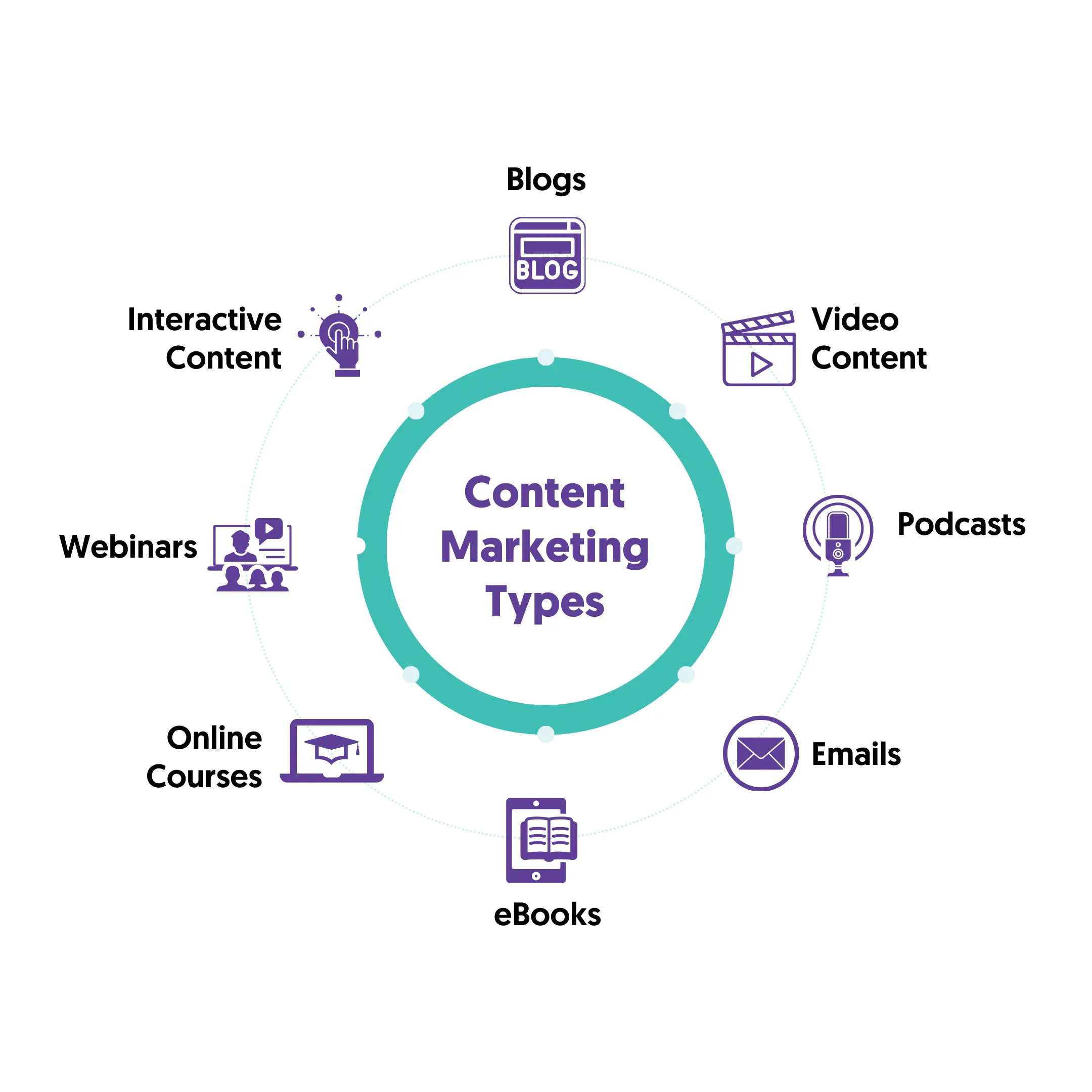
Here are a few examples:
- If your goal is to grow your organic search engine traffic, you’ll have to create a series of blog posts.
- If you’re running Facebook or Instagram ads, you’ll need to create all of your ad creative materials and landing pages to which you’ll be sending traffic.
- To execute a video marketing campaign, you must create, edit, and publish a series of videos.
Don't forget that your content assets will evolve based on performance. Maybe you’ve found that a specific type of image performs better than the rest or that a certain headline results in 10% more sign-ups. Your audience targeting will stay relatively the same (targeting your ideal customer), while your ad creative will evolve based on what your market responds to most.
Refining and creating new content is one of the ongoing tasks in any type of digital marketing campaign.
8. Create A Project Plan With Milestones
A digital marketing campaign is like a mini (or large) project with tasks, milestones, and deliverables. To make it easier to manage, you must create a detailed plan specifying what tasks you need to perform before starting a campaign and what tasks to monitor and optimize the campaign performance.
Your action plan should include details on who is responsible for each task and milestones to check progress.
For example, if you're running a campaign to increase sales of your digital products, your project plan might include initial tasks like market and audience research, with milestones set for completing the PPC keyword research process and ad creatives.
As the campaign launches, you can set biweekly milestones to evaluate the campaign performance and take corrective actions.
Having a project plan ensures that all team members know their responsibilities and progress is systematically tracked against specific goals.
9. Start Your Campaign
The next step is to start your campaign!
Here is a pro tip for you. Don't start your paid campaigns with a full budget before doing some tests. For example, if your daily budget for Facebook Ads is $100, start with a lower budget, i.e., $50 per day, and then increase it gradually.
By using this approach, you ensure that:
- You don’t waste your budget in case something is not configured correctly.
- You give the algorithms enough time to gather data about your campaigns and optimize delivery.
If you’re running content marketing campaigns, getting instant feedback is more challenging. However, you can see how your audience reacts to your content via comments, social shares, sign-ups, and time spent on a page.
Once you’ve seen which campaigns are generating the best results, it’s time to double down. Analyze the ROI from each campaign and move your budgets to the campaigns that perform better.
10. Monitor And Optimize Performance
With digital marketing campaigns, there’s no shortage of data available. Every advertising platform has a dashboard for tracking performance, and you can use various third-party tools to perform a deeper analysis.
However, before analyzing the data, you’ll want to refer back to your goals. This will help you concentrate on the KPIs that actually matter. Once you explore those numbers, you can figure out what’s working and what isn’t, so you’ll have insights you can take action on.
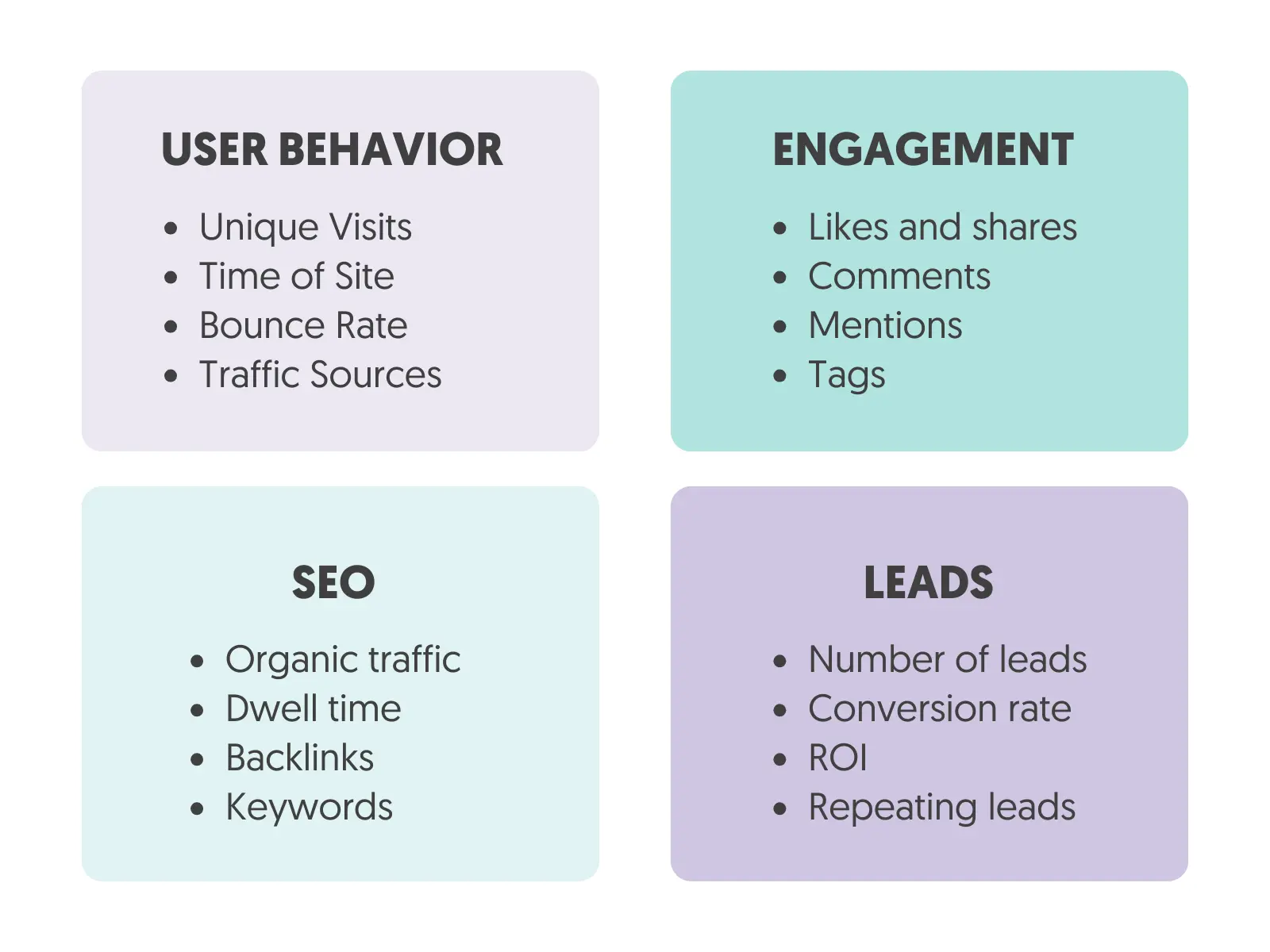
For example, if your goal is to increase traffic from search engines, closely monitor metrics like rankings, click-through rates, and Google visits. If your goal is to get more leads, track form submissions and conversion rates.
As you go deeper into analyzing your data, try to find aspects of your campaign that are performing well and underperforming. For example, if you notice a high CTR but low conversion rates, this might indicate that your landing page is not optimized properly.
It's possible that some of your digital marketing campaigns won’t generate positive results. That's normal for many reasons. You should determine why your campaigns failed and create a new set of targeted A/B tests for better results.
Here is another pro tip for you. One of the best ways to increase the ROI from any digital marketing campaign is to run retargeting in parallel with your other campaigns.
Retargeting ads allow you to target people who interacted with your campaigns but did not perform a desired action. The most common campaign types for retargeting are Facebook Ads, Google Ads, and email marketing.
Key Learnings
As you can see, a lot goes into executing a successful digital marketing campaign.
It all begins with choosing smart campaign goals. Next comes the research phase, where you’ll dive deep into your market and competition and start researching keywords you’ll use in your campaigns. Then, you'll determine the digital channels to execute your campaign and set your budgets.
Finally, you’ll create the required content assets, create a project plan, and run your campaigns.
